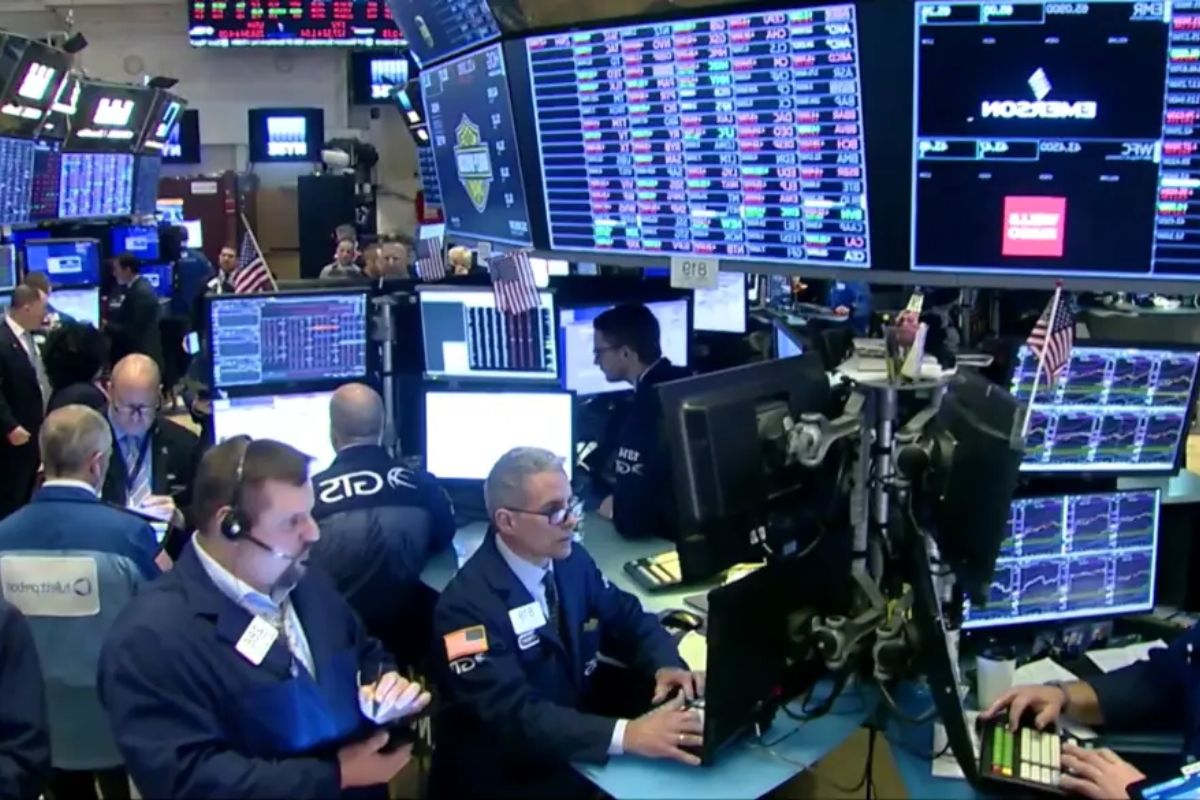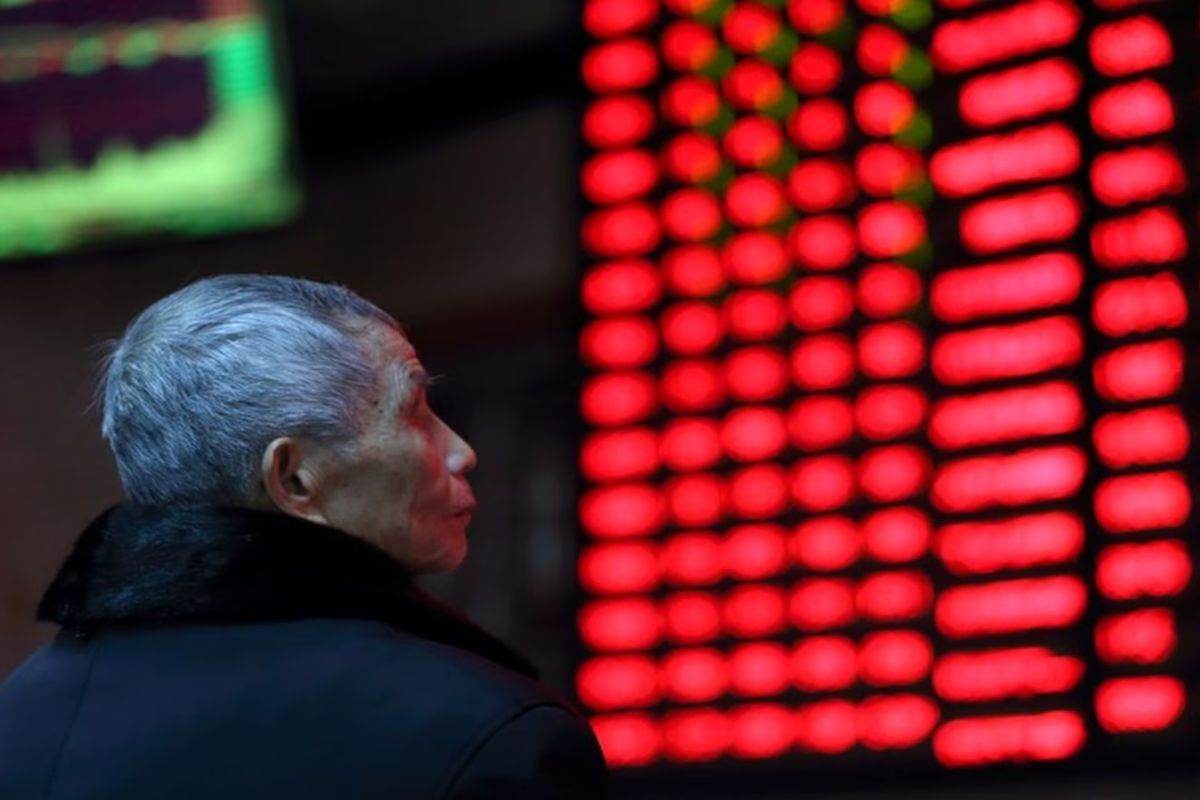Asia Stocks Face Challenges: The recent decision by China’s central bank to hold interest rates steady has sent ripples of uncertainty through Asian stock markets and has added to the already existing challenges posed by a fluctuating dollar.
The delicate balance between economic growth and maintaining stability is being tested, as investors grapple with the implications of this move. While some see it as a positive sign of confidence in the Chinese economy, others are concerned about the potential impact on global markets.
In this discussion, we will explore the various factors at play, including the implications for Asian stocks, the uncertainty surrounding the dollar, and the potential ramifications of China’s decision.
As the region’s markets navigate these challenges, investors are left pondering the path ahead and the potential opportunities and risks that lie in wait.
Key Takeaways
- Anticipation builds as speculation surrounding rate cuts grows in global markets
- Geopolitical tensions in the Middle East impact oil prices, adding to energy market volatility
- Bitwise Bitcoin ETF attracts significant attention and inflows, reflecting growing interest in cryptocurrency investments
- Asian markets face challenges amidst the fragility of China’s economic recovery
Global Markets and Central Bank Dynamics: Anticipation Builds Amidst Rate Cut Speculation
Anticipation intensifies in global markets as speculation surrounding rate cuts grows, revealing the intricate dynamics between central banks and the ever-shifting landscape of the world economy.
The recent fluctuations in the Asian stock market and the record-breaking performance of the Nikkei highlight the vulnerability of markets to economic shifts.
Also Read: Asia Stocks Edge Higher Amid China’s Actions on Housing and Yuan Weakness
The S&P 500 futures have dipped, indicating a 78% likelihood of a rate cut by the U.S. central bank in March. However, China’s unexpected decision not to cut rates has added a layer of uncertainty to the global economic outlook. This move has resulted in a fluctuating dollar and a slip in the yuan, further complicating the situation.
These developments underscore the delicate balance that central banks must strike in navigating the current economic environment. As investors and market participants eagerly await further actions from central banks, it is clear that the anticipation surrounding rate cuts will continue to shape global markets in the coming months.
Oil Market and Geopolitical Tensions: Brent Crude Faces Challenges Amid Middle East Dynamics
The challenges faced by Brent crude in the oil market are further compounded by the intricate dynamics of geopolitical tensions in the Middle East. As Brent crude futures drop by 0.4% to $77.98 per barrel, investors are closely monitoring developments in the region. The interplay between geopolitical uncertainties and market reactions highlights the delicate balance in the energy sector. Here are three key factors to consider:
- Impact on oil prices: Geopolitical tensions in the Middle East have historically had a significant impact on oil prices. Any disruption in the region’s oil production or transportation routes can lead to supply concerns and price spikes.
- Gold as a safe haven: Geopolitical tensions often drive investors towards safe-haven assets, such as gold. The recent increase in gold prices to a one-week high is a reflection of the uncertainty surrounding the Middle East dynamics.
- Energy market volatility: The complex geopolitical landscape in the Middle East adds to the overall volatility in the energy market. Traders and investors need to closely monitor geopolitical developments to anticipate potential shifts in supply and demand dynamics.
Cryptocurrency Surge and Regulatory Approvals: Bitwise Bitcoin ETF Garners Attention
The surge in cryptocurrency and the recent regulatory approvals have drawn significant attention to the Bitwise Bitcoin ETF, emphasizing the evolving landscape of digital assets within the broader financial market. The approval of 11 spot bitcoin ETFs by the U.S. Securities and Exchange Commission reflects a growing interest in cryptocurrency investments.
On its first trading day, the Bitwise Bitcoin ETF attracted the most inflows, highlighting the demand for exposure to this digital asset. This development signals a shift in investor sentiment towards cryptocurrencies, as they become more mainstream and accepted by regulators. The table below provides a comparison of the Bitwise Bitcoin ETF with other prominent cryptocurrencies:
| ETF Name | Inflows on First Trading Day |
|---|---|
| Bitwise Bitcoin ETF | Highest |
| Other Cryptocurrency 1 | Moderate |
| Other Cryptocurrency 2 | Low |
| Other Cryptocurrency 3 | Negligible |
As the cryptocurrency market continues to evolve, regulatory approvals like those seen with the Bitwise Bitcoin ETF will play a crucial role in shaping its future trajectory.
U.S. Energy Stocks Struggle: Divergence Highlights Challenges Amidst Geopolitical Uncertainties
The underperformance of U.S. energy stocks amidst geopolitical uncertainties in the Red Sea highlights the mounting challenges faced by this sector, contrasting with the broader market’s surge during the same period. This divergence emphasizes the vulnerability of energy stocks to geopolitical risks and their impact on sector-specific performance.
Here are three key factors contributing to the struggles of U.S. energy stocks:
- Geopolitical tensions: The escalating tensions in the Red Sea, with incidents such as attacks on oil tankers, have heightened concerns about supply disruptions and increased risk perception in the energy sector.
- Uncertain demand outlook: The ongoing trade disputes and slowing global economic growth have raised uncertainties regarding future energy demand, creating headwinds for U.S. energy companies.
- Regulatory challenges: The increasing focus on sustainability and climate change has led to stricter regulations and a shift towards renewable energy sources, posing challenges for traditional energy companies.
In light of these challenges, investors in the energy sector must carefully navigate the geopolitical landscape and adapt to the changing dynamics of the global energy markets.
Asian Markets and Economic Fragility: China’s Central Bank Decision and Market Reactions
Amidst concerns about the fragility of China’s economic recovery, Asian markets face challenges following the surprising decision of China’s central bank to abstain from a rate cut. This unexpected move has raised doubts about the strength of China’s economic rebound and its ability to sustain growth in the face of ongoing challenges such as the trade war with the United States and the COVID-19 pandemic.
The market reaction to the central bank’s decision has been mixed, with Chinese blue chips easing by 0.5% and reaching their lowest levels since early 2019. On the other hand, Japan’s Nikkei has displayed resilience, achieving a fresh 34-year peak.
These nuanced dynamics in the Asian markets highlight the complexities of regional economic conditions and their potential impact on global financial stability. As investors navigate the uncertainties ahead, they will closely monitor China’s economic performance and the policies implemented by its central bank.
Conclusion Of Asia Stocks Face Challenges
The stability of Asian markets remains uncertain amidst challenges such as:
- China’s decision to keep rates unchanged
- Geopolitical tensions in the Middle East
Additionally, the surge in cryptocurrencies and the struggle of U.S. energy stocks add to the overall economic fragility.
As global markets anticipate rate cuts and regulatory approvals, it is essential to closely monitor these developments and their potential impact on the stability of the region’s economy.
Our Reader’s Queries
Q1 What is the economic outlook for China in 2024?
A Economists are projecting an average growth rate of 4.6% for the year 2024, a slight increase of 0.1 point compared to the previous forecast in September. The growth estimates range between 4.4% and 5%, reflecting the varied perspectives within the economic outlook.
Q2 What is the outlook for the Chinese stock market?
A Government support, though not as rapid as market expectations, has been consistent and proactive since mid-2023. This leads us to anticipate ongoing indications of stabilization and growth throughout the year 2024.
Q3 Why Chinese stocks keep falling?
A Ongoing worries about the nation’s economic rebound and uncertainty in policy have driven the onshore equity benchmark to its lowest point in almost five years. Foreign investors resumed significant selling on Monday, divesting approximately $600 million worth of mainland shares. The market has been consistently hit by a barrage of adverse news.




